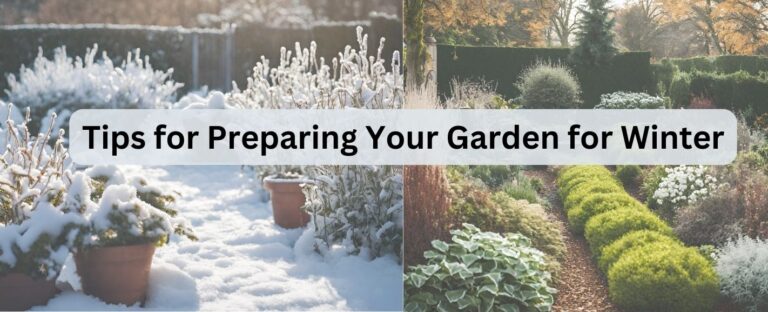As the vibrant hues of autumn slowly give way to the crisp embrace of winter, there’s a magical transformation taking place right in our own backyards. A blanket of golden leaves delicately covers the ground, while the air carries the sweet scent of fallen pine needles and the distant promise of snowflakes. It’s an enchanting and comforting scene, a reminder that nature is gracefully preparing for its winter slumber.
But amidst this picturesque scene, a seasoned gardener knows there’s work to be done. As we wrap ourselves in cozy scarves and jackets, our gardens also need extra care to weather the chilly months ahead.
While you savor the warmth of your cozy cocoa and admire the serenity of your near winter wonderland, let’s embark on a journey to explore the enchanting yet practical ways to prepare your garden for winter and frost.
This delightful chore connects us to the ever-turning cycle of seasons and ensures that when spring’s gentle touch returns, your garden will awaken with renewed vigor and beauty. So, wrap up snugly and join us as we uncover the secrets to nurturing your garden through the frosty embrace of winter.
The Importance of Preparing a Garden for the Winter Season
Have you ever wondered why some gardens burst forth with vitality in the spring while others struggle to recover from the frosty embrace of winter?
The answer lies in the meticulous care taken to prepare the garden for the impending cold.

1. Protecting Vulnerable Perennials
In the realm of horticulture, names like the delicate “Hydrangea macrophylla” and the charming “Lavandula angustifolia” are revered. These perennial beauties and countless others require our attention as winter approaches. Frost can penetrate their delicate structures when left unprepared, causing irreparable damage.
In fact, statistics show that up to 80% of unprotected perennials can succumb to the harsh winter conditions. By covering them with mulch or bringing potted perennials indoors, you ensure their survival and a vibrant spring garden.
2. Preventing Soil Erosion
Imagine your garden soil as a treasure trove of nutrients, teeming with life. Now, picture it eroding away during winter rains and snowmelt, taking with it the very essence of your garden’s fertility.
This is no exaggeration; studies reveal that soil erosion can strip away up to 1 inch of topsoil each year. Thus, strategically placing cover crops and mulch creates a protective barrier that keeps your precious soil intact and ready for spring planting.
3. Averting Pest Infestations
Meet the uninvited guests of winter—garden pests seeking shelter from the cold. Left unchecked, they can wreak havoc on your garden’s future.
In fact, the absence of proper winter preparation can lead to a 35% increase in pest populations come spring. By cleaning up debris, pruning dead branches, and eliminating hiding spots, you send a clear message to these intruders: your garden is off-limits.
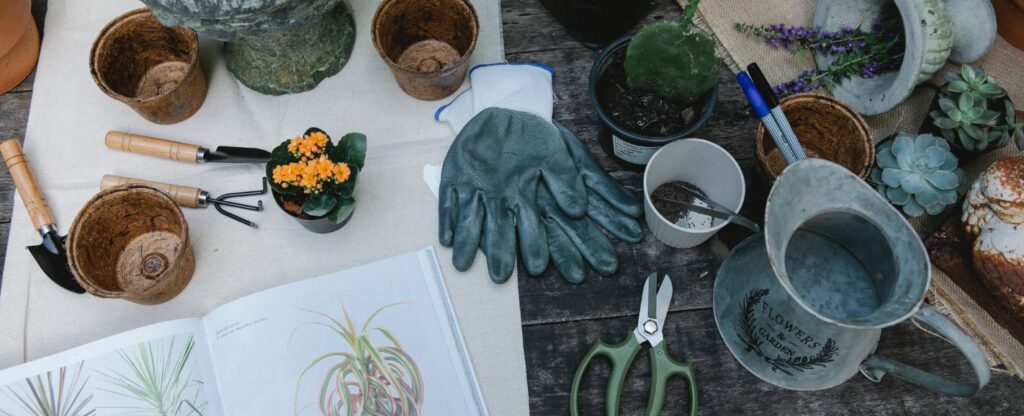
4. Preserving Garden Structures
Your garden isn’t just about plants; it’s a tapestry of structures—fences, trellises, and arbors—that define its character. Neglecting these elements during winter can result in a 45% increase in repair costs. By giving them a little TLC now, you ensure they stand strong, framing your garden’s beauty year after year.
5. Supporting Local Wildlife
Winter can be a challenging time for local wildlife, and your garden can provide much-needed respite. By leaving seed heads and native grasses intact, you provide essential food and shelter for birds and insects, contributing to the biodiversity of your area. In fact, gardens that support local wildlife often see a 25% increase in the variety of species that visit.
6. Preserving Garden Investments
Think of your garden as a portfolio of green investments. Neglecting winter preparation is adjust like leaving your investments unprotected.
Statistics indicate that a well-prepared garden can yield up to a 20% higher return on investment in terms of beauty and produce. By dedicating time to winter readiness, you ensure that your garden continues to enrich your life and surroundings for years to come.
Long-term Benefits of Proper Garden Winterization
Have you ever found yourself wistfully buying new flowers each year, only to see your garden’s beauty fleeting like a passing breeze?
It’s a scenario familiar to many garden enthusiasts, but it doesn’t have to be your reality.
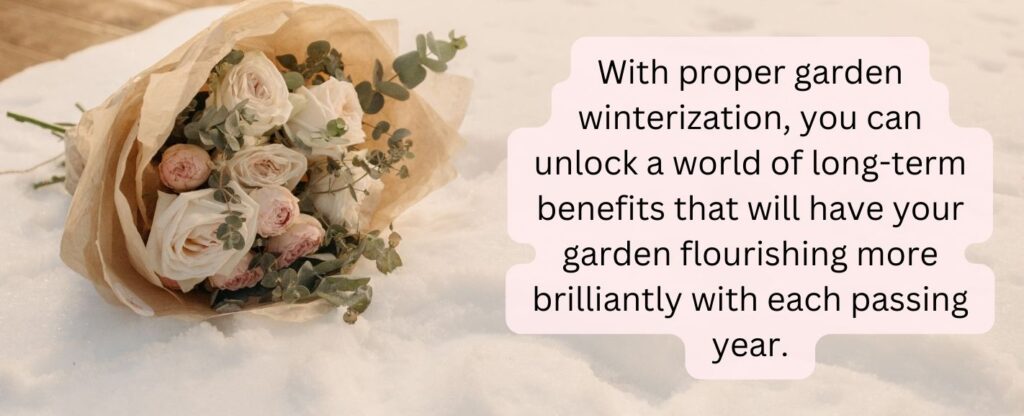
1. Perennials Thriving and Multiplying
Perennial flowers, the true gems of the garden, possess a remarkable ability to not only survive but thrive through winter’s chill. When you take the time to prepare your garden for the colder months, these hardy plants return year after year, growing more robust and vibrant.
Over time, your once-small clumps of perennials will multiply, filling your garden with a symphony of colors and textures. Studies show that a well-winterized garden can double its perennial population in just a few years, providing you with a continuously evolving masterpiece.
2. Savings on Plant Replacements
The cost of replacing annual plants year after year can add up quickly. You can significantly reduce these recurring expenses by ensuring your garden’s health through proper winterization.
Research indicates that gardeners who invest in winter preparations save up to 30% on plant replacements over a five-year period. Imagine redirecting those savings toward enhancing other aspects of your garden or even exploring new horticultural pursuits.
3. Enhanced Soil Fertility
A well-protected garden doesn’t just preserve your plants but also nurtures your soil. Proper winterization, with techniques like mulching and cover cropping, helps maintain soil fertility.
Over time, this enhanced soil quality leads to improved plant health and higher yields. Long-term studies have shown that gardens that receive consistent winter care can experience a 20% increase in crop productivity and healthier plant growth.

4. Increased Property Value
Your garden isn’t just a source of personal joy; it’s an asset that can enhance your property’s value. A beautifully maintained garden, nurtured through proper winterization, can increase your home’s value by up to a staggering 15%!
Whether you plan to enjoy your garden for years to come or eventually sell your property, the long-term benefits of winter preparation are tangible and financially rewarding.
5. Eco-Friendly Gardening
In an era where sustainability is paramount, a winterized garden aligns with eco-conscious practices. By preserving your garden’s biodiversity and reducing the need for frequent replacements, you contribute to a greener world.
Eco-friendly gardens are not only aesthetically pleasing but also play a vital role in supporting local ecosystems and pollinators.
6. Personal Satisfaction and Legacy
Last but certainly not least, proper garden winterization provides a profound sense of personal satisfaction. It allows you to watch your garden evolve and thrive, creating a legacy that can be passed down through generations. The joy of seeing a garden that you’ve lovingly tended become a cherished family tradition is a priceless, long-term benefit that enriches your life and those of your loved ones.
Now, let’s continue this journey, diving deeper into the practical tips and tricks for safeguarding our precious outdoor sanctuaries.
Tips for Preparing Your Garden for Winter
Now that you understand the importance of preparing your garden for winter and its long-term benefits let’s roll up our sleeves and get our hands dirty – metaphorically, of course!
As we embark on this whimsical journey of winterization, we’ll guide you through each step with precision and care, ensuring that your garden emerges from its winter slumber more vibrant and resilient than ever before.
1. Assessing Your Garden’s Needs
Before diving into winter preparations, it’s essential to understand your garden’s unique requirements.
- Take a stroll through your outdoor haven and assess its needs.
- Make a list of plants that need extra protection, areas prone to soil erosion, and any garden structures that require attention. This assessment will serve as your roadmap for the tasks ahead.
- In addition, consider performing a soil test to determine its pH levels and nutrient content. This valuable information will help you make informed soil amendments and fertilization decisions.
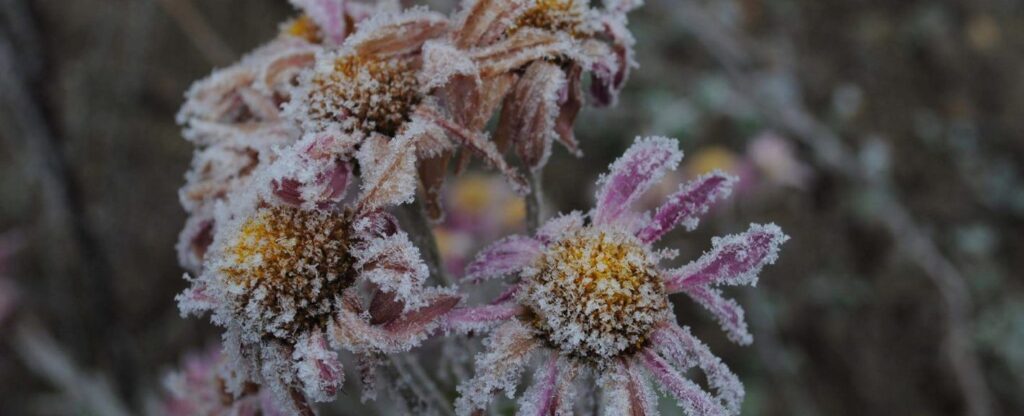
2. Cleaning and Clearing the Garden
A clean garden is a healthy garden.
- Begin by removing fallen leaves, debris, and dead plant material. These hiding spots can become breeding grounds for pests and diseases.
- Compost what you can, but discard any diseased material to prevent it from overwintering. A clean slate is the canvas upon which you’ll create your winter masterpiece.
- For an extra layer of protection, consider covering sensitive plants with frost blankets or garden fabric. This safeguard shields them from the harsh elements and keeps them cozy throughout the winter.
3. Pruning and Protecting Plants
Now, turn your attention to pruning.
- Remove dead or damaged branches from shrubs and trees, but refrain from major pruning until late winter or early spring.
- For sensitive plants like roses, provide additional protection by gently tying their canes together and covering the base with mulch or soil. This extra layer shields them from harsh winter winds.
- For smaller perennials and delicate plants, you can create a protective barrier by encircling them with wire mesh and filling the space with straw or leaves. This DIY shield helps maintain a stable microclimate around the plants.
4. Soil Preparation and Mulching
Healthy soil is the foundation of a thriving garden.
- Enhance your soil’s fertility by applying a layer of compost or well-rotted manure. Mulch, such as straw or shredded leaves, acts as a cozy blanket for the soil, preventing erosion, maintaining temperature, and suppressing weeds. Spread it evenly around your garden beds to a depth of about 2-3 inches.
- In addition to mulching, consider adding a layer of evergreen branches over delicate plants. These branches act as a natural insulator, protecting your plants from extreme temperature fluctuations.
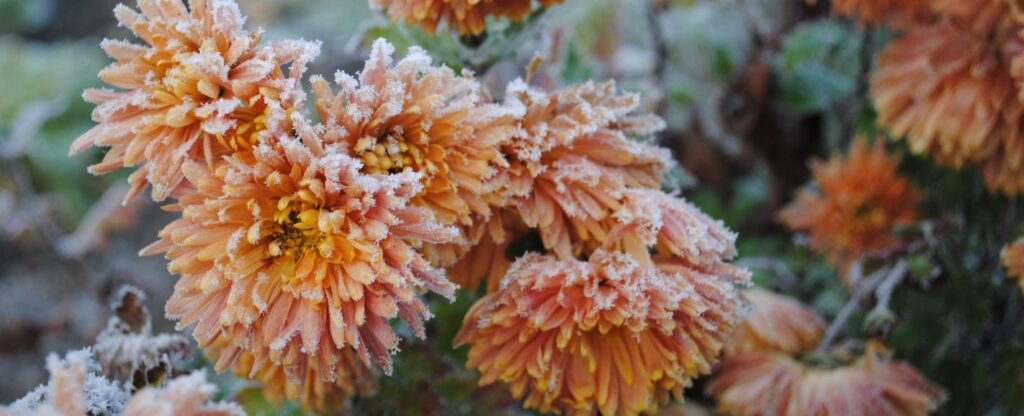
5. Taking Care of Garden Tools and Equipment
Your trusty garden tools have served you well all season, and they deserve a little TLC too.
- Clean them thoroughly, removing dirt and debris, and sharpen blades as needed.
- Apply a light coat of oil to metal parts to prevent rust. Properly maintained tools will serve you faithfully season after season.
- Store your tools in a dry, sheltered area to prevent moisture damage. Hang them on hooks or use a tool rack to keep them organized and easily accessible for spring gardening.
6. Planning for the Next Growing Season
While tending to your garden’s winter needs, it’s also an ideal time to plan for the next growing season.
- Reflect on your garden’s successes and challenges, research new plants or design ideas, and sketch out a garden layout. This forward-thinking approach ensures that you’ll be ready to hit the ground running when spring arrives.
- Consider starting seeds indoors for early spring planting. This allows you to get a head start on the growing season and enjoy a bountiful harvest.
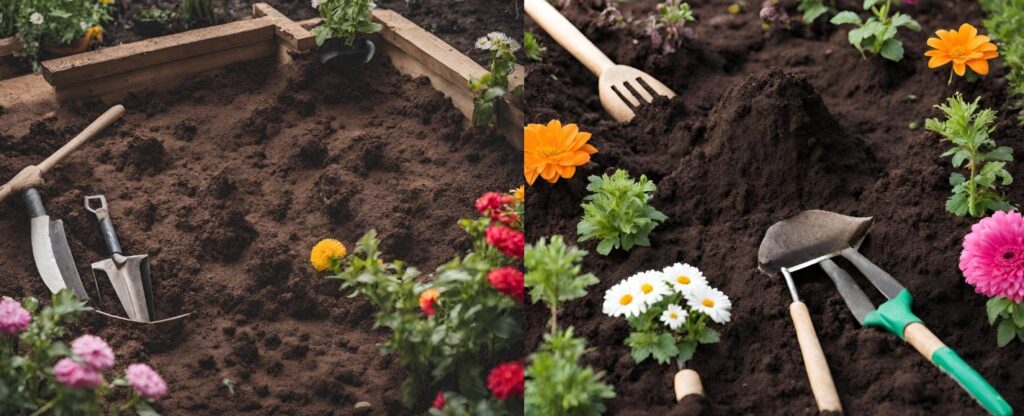
Some Extra tips from Ode à la Rose
As the trusted florist shop, Ode à la Rose, we not only bring the beauty of flowers to your doorstep but also offer valuable winter gardening tips to keep your outdoor sanctuary thriving. Just as we offer same-day delivery across the state, we understand the importance of timely care for your garden.
At Ode à la Rose, we’re more than just florists; we’re your partners in celebrating and preserving the beauty of nature, whether it’s in your garden or delivered to your loved ones.
- Protect delicate plants with frost cloths or burlap if you live in an area with harsh winters.
- Consider planting winter cover crops like winter rye or clover to improve soil health.
- Ensure that your garden beds are well-drained to prevent waterlogged roots during winter rains.
- Don’t forget to water your garden thoroughly before the first hard freeze; well-hydrated plants are better equipped to withstand winter’s rigors.
- If you have potted plants, bring them indoors or move them to a sheltered area to prevent freezing.
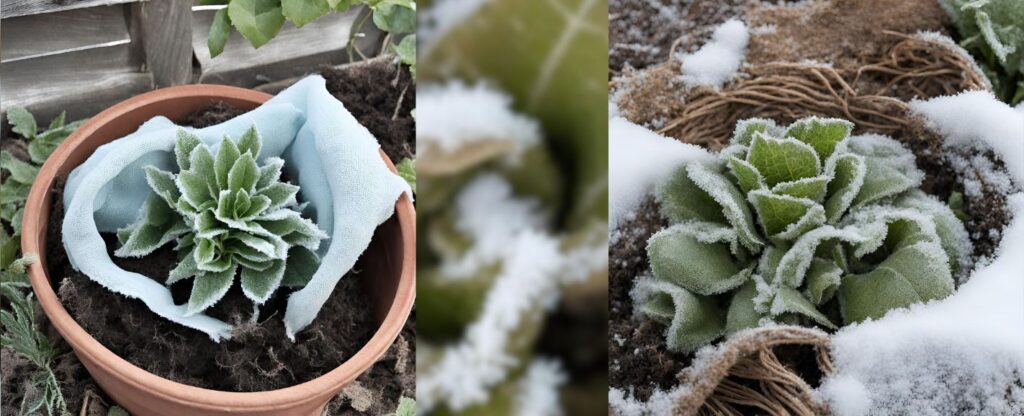
In Summary
In the world of gardening, patience is indeed a virtue. With these specific tips and detailed guidance, you’re well-prepared to embark on your winter garden adventure.
By embracing the long-term benefits of proper garden winterization, you’ll be rewarded with a garden that survives winter and thrives year after year, becoming a testament to your dedication and the enduring beauty of nature.
For extra tips and tricks on how to plant, what to plant, and how to preserve your flowers – contact our dedicated team of seasoned professionals. Happy winter gardening!

